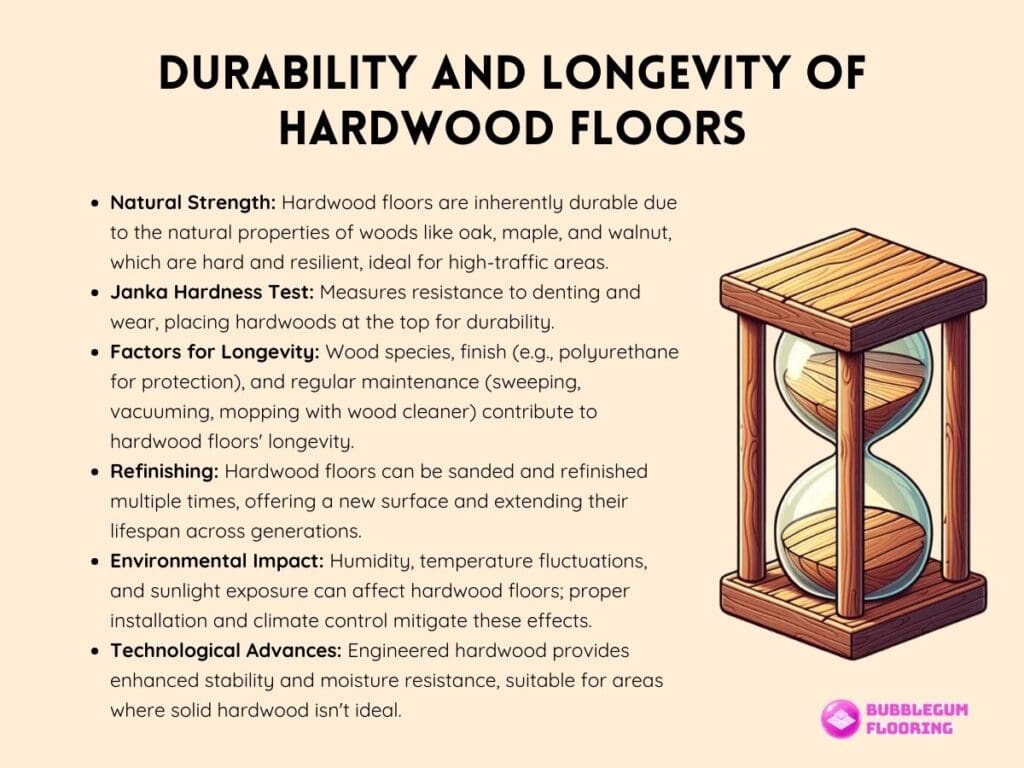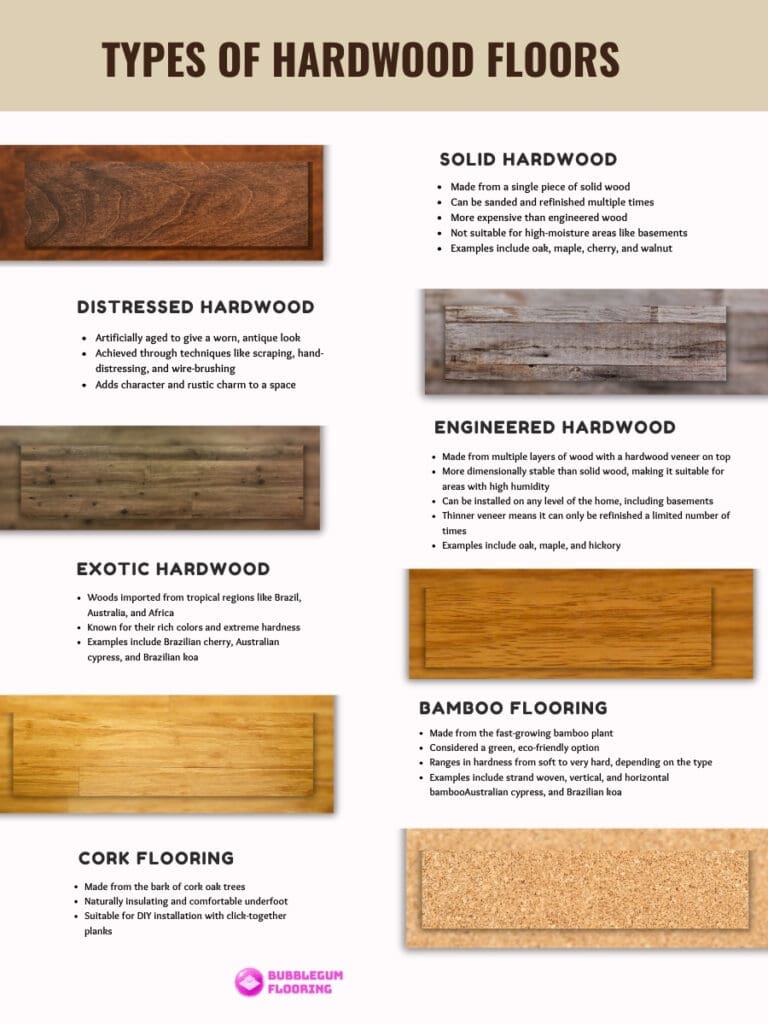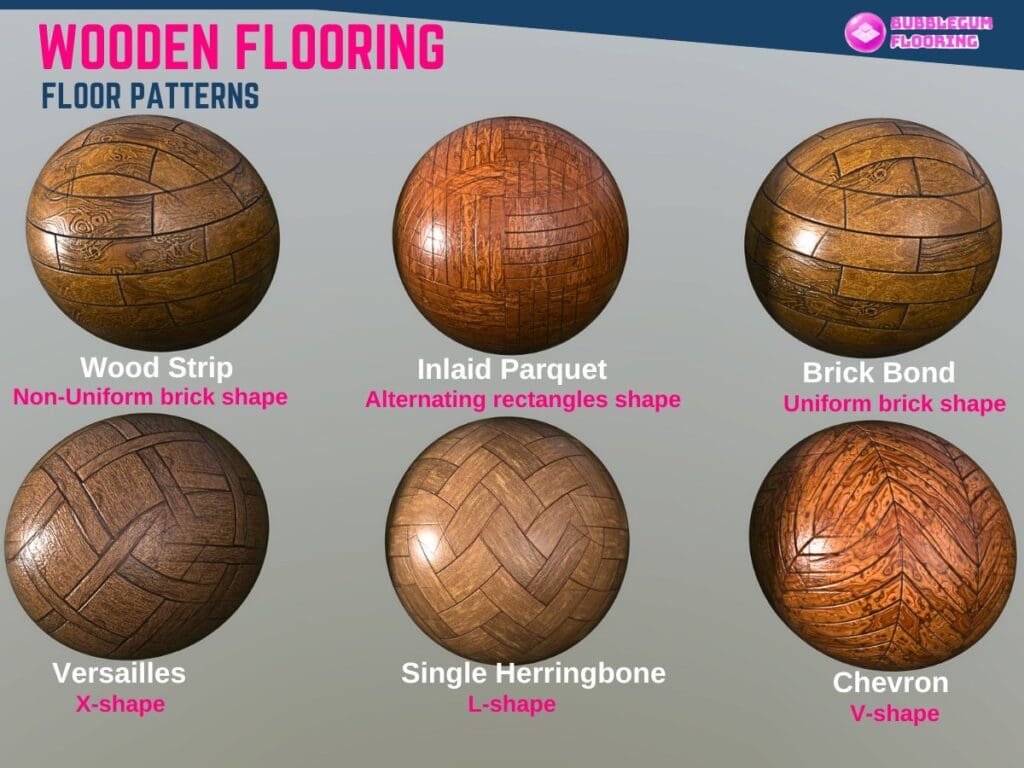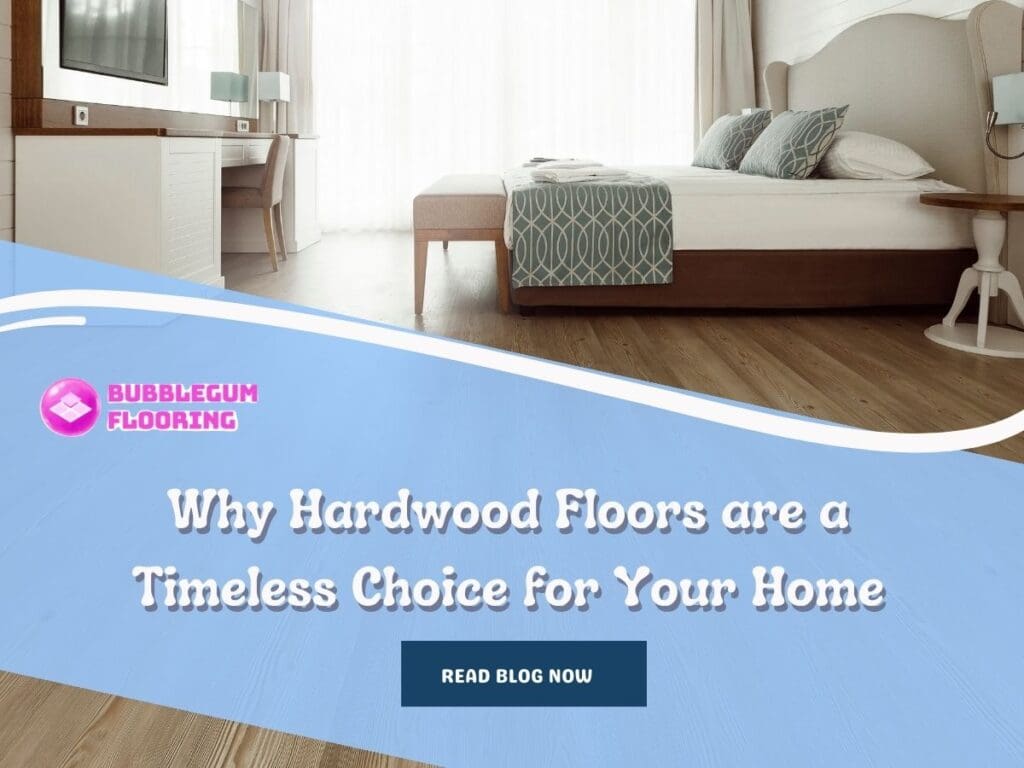Hardwood floors have been a symbol of elegance and durability in homes for generations. Despite evolving trends in home decor, the allure of hardwood floors remains strong. Are hardwood floors a timeless choice for your home? Yes.
Unlike many contemporary flooring options, hardwood has managed to retain its charm, proving its timeless nature. This blog delves into the unique aspects of hardwood floors, exploring why they continue to be a top choice for homeowners seeking both style and substance.
The Aesthetic Versatility of Hardwood Floors
Hardwood floors have graced homes for centuries, offering warmth, elegance, and an undeniable charm. Unlike other flooring options that might cater to specific tastes or trends, hardwood floors boast unparalleled versatility, making them suitable for an array of interior designs—from the rustic and traditional to the sleek and modern.
Historical Significance and Design Evolution
The use of hardwood for flooring dates back to the early 1600s, primarily in Europe, where it was reserved for the most affluent.
As the centuries passed, the appeal of hardwood floors spread across the globe, evolving with the times to adapt to various architectural and design movements. Today, hardwood floors are celebrated not just for their durability but for their ability to elevate any space.
Wood Types and Their Unique Characteristics
Each type of hardwood brings its unique characteristics, color, grain, and texture, allowing homeowners to customize their spaces to their exact preferences. Below is a table that outlines popular wood types, their ideal style compatibilities, and unique attributes:
| Wood Type | Ideal Style | Finish Options | Unique Characteristic |
| Oak | Traditional | Gloss, Matte | Durable, pronounced grain |
| Maple | Modern | Satin, Natural | Light color, subtle grain |
| Cherry | Elegant | Rich, Deep | Darkens with age, smooth texture |
| Walnut | Luxurious | Dark, Polished | Deep color, sophisticated grain |
Design Flexibility
Hardwood’s natural beauty and the variety of available finishes (from glossy to matte) enable it to fit seamlessly into any decorating theme. For a traditional look, oak and cherry offer warmth and elegance, while maple and walnut can create a more contemporary or luxurious feel. Below is the integration into Various Design Styles:
- Traditional: Oak floors with a matte finish complement classic furniture and décor, enhancing the warm, inviting feel of traditional homes.
- Contemporary: Maple floors with a satin finish work beautifully in modern settings, offering a clean, minimalist backdrop.
- Rustic: Distressed walnut or oak floors can add character and a sense of history to rustic or farmhouse-style interiors.
- Luxurious: Cherry wood with a rich, deep finish adds sophistication and depth, perfect for creating a luxurious space.
Future Trends in Hardwood Aesthetics
As we look to the future, the trend is leaning towards more sustainable and eco-friendly options, such as bamboo and reclaimed wood, which not only offer unique aesthetics but also contribute to the conservation of our planet.
Advances in wood treatment and finishing technologies continue to expand the design possibilities, making hardwood an even more versatile and appealing option for homeowners.
Hardwood floors stand the test of time, not just in durability but also in style. Their ability to adapt to any interior design trend makes them a timeless choice for any home. Whether you are renovating a century-old house or building a new modernist home, hardwood floors offer a foundation of warmth, elegance, and style that is unmatched by any other flooring material.
The Durability and Longevity of Hardwood Floors
When investing in new flooring, homeowners often seek a balance between aesthetic appeal and long-term durability. Hardwood floors excel in both, providing a timeless elegance that can withstand decades of use.
This durability is not just a testament to hardwood’s natural strength but also to its ability to adapt and be rejuvenated over time.

Natural Strength and Resilience
Hardwood’s inherent durability stems from its natural properties. Woods like oak, maple, and walnut are renowned for their hardness and resilience, making them ideal choices for flooring that is both beautiful and capable of handling the rigors of daily life.
The Janka Hardness Test, which measures the resistance of wood to denting and wear, places these hardwoods at the top of the scale, indicating their suitability for high-traffic areas in homes.
Factors Contributing to Longevity
Several factors contribute to the longevity of hardwood floors:
- Wood Species: The type of hardwood plays a significant role. Harder woods like hickory and oak are more resistant to scratches and dents, while softer woods like pine offer a different aesthetic but may require more maintenance.
- Finish: The choice of finish can significantly impact the floor’s durability. Modern finishes like polyurethane provide a protective coat that shields the wood from spills, stains, and scratches.
- Maintenance: Regular cleaning and maintenance, such as sweeping, vacuuming, and occasional mopping with a recommended wood cleaner, help preserve the floor’s integrity. Promptly addressing spills and avoiding harsh chemicals are also crucial.
Maintenance and Refinishing
One of the unique advantages of hardwood floors is their ability to be refinished. Over time, any flooring can show signs of wear, but unlike carpet or tile, hardwood floors can be sanded down and refinished, essentially providing a brand-new surface.
This process can be repeated multiple times over the floor’s life, depending on the thickness of the wood. Thus, hardwood floors offer longevity that can span generations, making them a highly cost-effective option in the long term.
The Impact of Environment on Hardwood Floors
While hardwood floors are durable, their longevity can also be influenced by the environment. Factors such as humidity, temperature fluctuations, and exposure to direct sunlight can affect the wood.
Proper installation and ongoing climate control within the home can mitigate these effects, ensuring the wood remains stable and maintains its beauty over time.
Technological Advances in Hardwood Flooring
The hardwood flooring industry has seen significant technological advances that enhance the durability and longevity of hardwood floors. Engineered hardwood, for example, consists of a real hardwood veneer atop a core of high-density fiberboard (HDF) or plywood.
This construction provides enhanced stability and resistance to moisture changes, making engineered hardwood an excellent option for areas where solid hardwood might not be suitable, such as basements or concrete slabs.
Hardwood Floors and Home Value
The decision to install hardwood floors in a home is often motivated by more than just the desire for a stunning and durable surface; it’s an investment in the property’s value and appeal.
Hardwood floors are not merely a design choice—they are a financial strategy that can significantly impact a home’s marketability and resale price. This intrinsic value of hardwood flooring is recognized by homeowners, real estate agents, and potential buyers alike, making it a coveted feature in the housing market.

Enhancing Home Value
Hardwood floors have a timeless appeal that transcends various design trends, making them highly sought after in the real estate market. Their presence in a home can elevate the property’s value, often resulting in a higher selling price compared to homes with other types of flooring.
This premium is attributed to the perception of quality, durability, and the aesthetic appeal that hardwood floors bring to a space. According to the National Association of Realtors, homes with hardwood floors can sell for up to 10% more than homes without them.
Appeal to Potential Buyers
The appeal of hardwood floors to potential buyers cannot be overstated. They are often listed as a preferred feature in home listings and are known to attract more foot traffic during open houses. The reasons for this preference are manifold:
- Aesthetics: Hardwood floors offer a warm, inviting look that complements any decor style, from traditional to contemporary.
- Perceived Value: Buyers are willing to pay more for homes that already have hardwood floors installed, recognizing the investment in quality and the avoidance of future renovation costs.
- Low Maintenance and Durability: Unlike carpeting that needs to be replaced every few years, hardwood floors can last for decades with minimal maintenance, making them an attractive long-term investment for buyers.
Impact on Resale Speed
Not only can hardwood floors increase a home’s value, but they can also expedite the selling process. Properties featuring hardwood flooring tend to sell faster than those without, as buyers are more likely to make an offer on a home that meets their aesthetic and practical preferences from the outset.
The desirability of hardwood floors means that homes boasting this feature often spend less time on the market, reducing carrying costs for sellers and providing a quicker path to sale closure.
Long-Term Investment
Investing in hardwood floors is a strategic move that pays dividends over the life of the home. While the initial cost may be higher than other flooring options, the long-term benefits—increased home value, aesthetic appeal, and durability—make it a wise financial decision.
Homeowners can enjoy the beauty and functionality of their hardwood floors, knowing they have also invested in the property’s future resale value.
Health and Environmental Benefits of Hardwood Floors
In the quest for a healthier and more sustainable home environment, many homeowners are turning to hardwood floors, not just for their beauty and durability, but for the significant health and environmental benefits they offer.
From improving indoor air quality to supporting sustainable forestry practices, hardwood floors are an excellent choice for eco-conscious homeowners.

Improving Indoor Air Quality
One of the most compelling health benefits of hardwood floors is their contribution to cleaner indoor air. Unlike carpets, which can harbor allergens, dust mites, and mold, hardwood floors offer a smooth, non-porous surface that doesn’t trap harmful particles.
This feature is particularly beneficial for households with allergy sufferers or those with respiratory issues, as it significantly reduces their exposure to allergens.
- Allergen Reduction: Hardwood floors minimize the accumulation of dust, pet dander, and pollen, common triggers for allergy and asthma symptoms.
- Easy to Clean: The ease of cleaning hardwood floors—requiring only sweeping or mopping—helps maintain a dust-free and healthier living environment.
Supporting Sustainable Living
Hardwood floors are not only beneficial for the health of a home’s occupants but also for the planet. The production and installation of hardwood flooring can have a lower environmental impact compared to other flooring options, particularly when sourced from responsibly managed forests.
- Sustainable Forestry: Many hardwood floors come from forests where the rate of tree harvesting is balanced by the rate of new growth. This sustainable approach ensures that the ecological balance of the forest is maintained.
- Longevity and Renewability: The long lifespan of hardwood floors reduces the need for frequent replacements, unlike other flooring materials that might end up in landfills. Moreover, wood is a renewable resource, making hardwood floors an environmentally friendly choice.
- Carbon Footprint: Wood floors can act as a carbon sink, storing carbon dioxide during their lifespan and thus reducing the overall carbon footprint of a home.
Eco-Friendly Manufacturing Processes
Advancements in the manufacturing of hardwood floors have led to more eco-friendly processes that minimize waste and reduce environmental impact. Many manufacturers now use safer, low-VOC (volatile organic compounds) finishes and adhesives, which contribute to better indoor air quality and a healthier living environment.
- Low-VOC Finishes: Modern finishes and sealants with low VOC emissions protect air quality, ensuring that hardwood floors are a safe choice for indoor environments.
- Recycling and Reuse: The wood industry has made strides in recycling and repurposing wood waste, further enhancing the sustainability profile of hardwood floors.
Hardwood Flooring Trends and Innovations
In the realm of home design, hardwood flooring continues to evolve, embracing new trends and innovations that enhance its appeal, functionality, and sustainability. These advancements not only cater to the aesthetic preferences of homeowners but also address environmental concerns and the demand for more durable, versatile flooring solutions.

Let’s delve into the latest trends and technological breakthroughs that are shaping the future of hardwood flooring.
Wide Plank Flooring
One of the most prominent trends in hardwood flooring is the shift towards wide plank floors. These planks, significantly broader than traditional strips, offer a rustic and spacious feel to any room.
The wide planks have the advantage of showcasing the wood’s natural grain and character more fully, providing a sense of warmth and openness that is highly sought after in contemporary home design.
- Aesthetic Appeal: Wide planks reduce the number of seams on the floor, creating a cleaner and more cohesive look.
- Versatility: Suitable for both modern and traditional interiors, wide plank flooring is versatile enough to complement any design theme.
Engineered Hardwood
Engineered hardwood has emerged as a game-changer in the flooring industry, offering the beauty of traditional hardwood with enhanced stability and moisture resistance. This innovation involves layering a real hardwood veneer atop a core of high-density fiberboard (HDF) or plywood, creating a product that can withstand the challenges of varying climates and subfloor conditions.
- Moisture Resistance: Engineered hardwood is less susceptible to warping and swelling, making it ideal for humid climates or installations over concrete slabs.
- Sustainability: The efficient use of wood in engineered hardwood floors reduces the demand for solid wood, contributing to more sustainable forestry practices.
Eco-friendly and Reclaimed Wood Flooring
As environmental awareness grows, so does the interest in eco-friendly and reclaimed wood flooring options. Reclaimed wood, sourced from old buildings, barns, and industrial spaces, offers a unique history and character while promoting sustainability. Similarly, flooring made from rapidly renewable resources like bamboo provides an eco-conscious alternative to traditional hardwoods.
- Unique Character: Reclaimed wood floors bring a story and a sense of history into the home, with each plank bearing unique marks of its past life.
- Sustainability: Both reclaimed wood and bamboo flooring options reduce the impact on forests, aligning with the principles of green building and sustainable design.
Technological Innovations in Finishes and Installation
The latest technological innovations have revolutionized hardwood floor finishes and installation methods, enhancing durability, ease of maintenance, and aesthetic versatility.
- Advanced Finishes: New formulations for finishes are now more robust, scratch-resistant, and environmentally friendly, with low-VOC options available to safeguard indoor air quality.
- Improved Installation: Click-and-lock engineered hardwood floors simplify the installation process, allowing for faster, more efficient setups without the need for nails or glue.
Customization and Personalization in Hardwood Flooring
The allure of hardwood flooring is not just in its timeless beauty and durability but also in its capacity for customization and personalization. This unique aspect allows homeowners to transform their spaces into true reflections of their personal style and taste.
In an era where home design is not just about aesthetics but also about creating spaces that tell a story, the ability to customize hardwood floors has become increasingly significant.
Tailoring Your Space
Customization in hardwood flooring can range from selecting specific wood species and finishes to incorporating intricate patterns and designs. This level of personalization ensures that no two floors are exactly alike, providing homeowners with the opportunity to create a truly unique space.
- Wood Species and Finishes: The choice of wood species has a profound impact on the look and feel of a room. Oak, walnut, maple, and cherry each bring their own color, grain, and texture to a space. Beyond species, finishes can alter the appearance of the wood, from glossy and sleek to matte and understated, further personalizing the space.
- Plank Width and Length: The dimensions of hardwood planks can significantly influence the room’s appearance. Wide planks can make a room feel larger and more open, while narrow planks offer a more traditional look. The length of the planks also plays a role in the floor’s overall aesthetic, with longer planks providing a seamless and elegant appearance.
Incorporating Design Elements
Beyond the basic choices of species and finishes, hardwood floors can be personalized through various design elements. Whether it’s the layout pattern, the addition of borders and medallions, or the use of mixed materials, these design elements can turn a floor into a work of art.

- Layout Patterns: Traditional layouts like straight planks are timeless, but herringbone, chevron, and parquet patterns can add visual interest and sophistication to any room. Each pattern has a unique way of capturing attention and can define the space’s style.
- Borders and Medallions: For an added level of customization, wood borders, and medallions offer a chance to incorporate intricate designs and contrasting wood species. These elements can highlight specific areas of a room or add a focal point to an otherwise simple floor.
- Mixed Materials: Incorporating mixed materials, such as metal inlays or stone accents, into hardwood flooring can create a distinctive and modern look. This approach allows for endless creativity, blending the warmth of wood with other textures and elements.
The Future of Customization
Technological advancements have opened up new possibilities for hardwood floor customization. Digital imaging and laser-cutting technologies allow for precise and intricate designs that were not possible in the past.
Looking forward, we can expect even more innovative methods for personalizing hardwood floors, including customizable color treatments and textures that cater to individual preferences.
How to Know When It’s Time to Replace Your Flooring
Deciding when to replace your flooring can be a challenging task, but there are clear signs to watch for. If your floors show extensive wear and tear, such as deep scratches, stains that can’t be removed, or damaged planks that affect the overall integrity, it’s likely time for an update.
Additionally, if your floors are outdated and significantly detract from your home’s aesthetic appeal or value, consider a replacement. Persistent creaks and unevenness can also indicate underlying issues that new flooring can resolve. Ultimately, replacing your flooring can rejuvenate your space, enhancing both function and style.
FAQs
Q: How does the hardness of the wood affect its suitability for flooring?
A: The hardness of the wood, measured by the Janka hardness scale, is crucial in determining its suitability for flooring. Harder woods are more resistant to scratches and wear, making them ideal for high-traffic areas or homes with pets.
Q: Can hardwood floors be a sustainable choice?
A: Yes, many hardwood floors are sourced from sustainable forests and manufactured using eco-friendly practices. Look for certifications like FSC (Forest Stewardship Council) to ensure your hardwood floors are environmentally responsible.
Q: Are hardwood floors suitable for homes with children and pets?
A: Hardwood floors are an excellent choice for homes with children and pets, thanks to their durability and ease of maintenance. Opting for harder woods and finishes that offer additional protection can enhance their suitability.
Q: How do climate and humidity affect hardwood floors?
A: Hardwood floors can expand and contract with changes in humidity and temperature. It’s important to consider your local climate when choosing hardwood floors and to maintain an optimal indoor environment to preserve their longevity and appearance.


